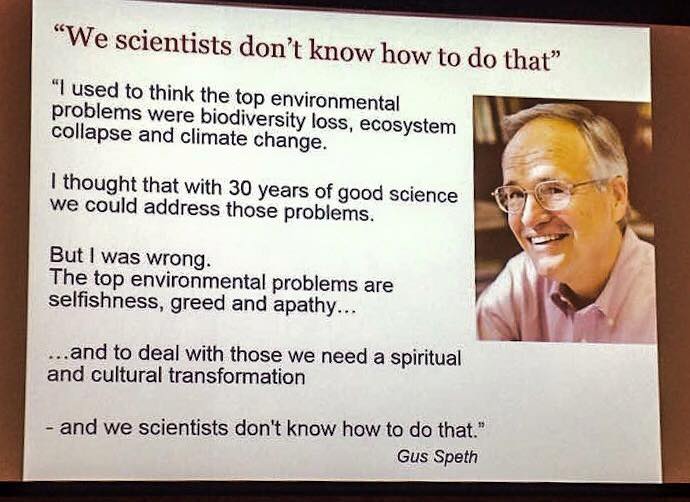The other day, I saw the above photo in my Facebook feed (photo © Kerry Dixon).
“Transformation” is a nebulous word, kind of like “sustainability” was a decade ago. Few people identify their primary field as “transformation.” Rather, it crosses multiple sectors, from science to business to spirituality and all points in between.
The world I want to live in, and leave to future generations, is one filled with compassion, peace, equality, resource-sharing and respect for all humans as well as the natural world.
This isn’t some idealistic dream. This is what it will take to make sure our planet survives.
Yet today, much of our world is mired in vast inequality, racism and violence; species are going extinct left and right while the planet melts. A full 50% of humans attempt to survive on $2 a day or less.
As devastating as these are, these aren’t the deepest problems. These are interconnected manifestations of underlying issues, including obliviousness, disconnection from other people and the natural world, and a misunderstanding of who we are and why we’re here.
To truly effect social change on a global level requires a massive shift in consciousness. Individual consciousness. Social consciousness. Cultural consciousness. Collective consciousness.
Transformation gets at the root issue; it’s not a Band-Aid solution. We can’t keep fighting against Others; we need to see ourselves as part of this living system that needs healing. And that, in turn, requires a multidisciplinary approach, from frontier science to healthcare to spirituality.
Mindfulness is the first step. Once we stop participating in the epidemic of busyness, once we begin paying attention, as Jack Kornfield says, we can’t not notice pain and suffering—within and without. And once we recognize how broken our world is, we can’t un-see it. Once we see how fortunate we are—and if you’re reading this, you have access to electricity, a device and an internet connection—we see our obligation to help heal the world. More profoundly, we become motivated by an internal desire to contribute to that healing, because what’s hurting is a part of us.

